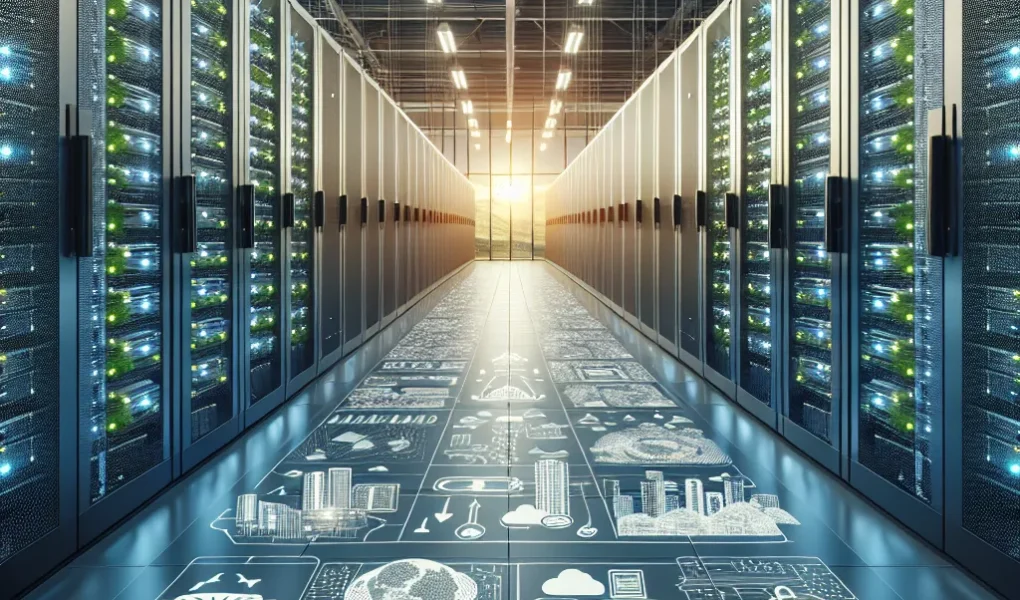Implementing Data Center Cooling Strategies for Enhanced Energy Efficiency
In the realm of grid computing, maximizing energy efficiency is a paramount concern for organizations striving to reduce operational costs and environmental impact. One crucial aspect of this endeavor is the implementation of data center cooling strategies designed to enhance energy efficiency. Data centers are notorious energy consumers, and their cooling systems play a pivotal role in maintaining optimal operating temperatures for servers and networking equipment.
Implementing innovative cooling techniques such as hot and cold aisle containment, liquid cooling, and airflow optimization can significantly reduce energy consumption and carbon footprint. Hot aisle containment involves confining hot air generated by servers, while cold aisle containment directs cool air to IT equipment more effectively. Liquid cooling, on the other hand, is gaining traction for its ability to dissipate heat more efficiently than traditional air cooling methods. Furthermore, optimizing airflow patterns within data centers can prevent the mixing of hot and cold air, thereby enhancing cooling efficiency.
By integrating these data center cooling strategies, organizations can maximize energy efficiency in their grid computing operations, leading to substantial cost savings and environmental benefits. It is imperative for businesses to prioritize the implementation of these techniques as part of their overarching energy conservation initiatives.
Optimizing Virtualization Techniques for Energy-Efficient Cloud Computing
When it comes to maximizing energy efficiency in grid computing, one of the crucial aspects to consider is optimizing virtualization techniques for energy-efficient cloud computing. Virtualization plays a pivotal role in achieving energy efficiency in cloud environments by consolidating multiple virtual machines (VMs) onto physical servers, thus reducing the overall energy consumption. By effectively managing the allocation of resources and workload consolidation, virtualization helps in minimizing the number of active physical servers, consequently leading to lower energy usage.
Moreover, advancements in virtualization technologies have led to the development of dynamic power management techniques that intelligently adjust the power consumption based on the current workload and demand. Techniques such as dynamic voltage and frequency scaling (DVFS) enable cloud providers to optimize energy consumption by dynamically adjusting the voltage and frequency of processors according to the workload, thereby reducing energy wastage during low utilization periods.
Furthermore, the implementation of live migration and load balancing algorithms in virtualized environments contributes to energy efficiency by reallocating VMs across physical servers to achieve better resource utilization and load distribution. By dynamically consolidating VMs on a reduced number of active physical servers, energy consumption is significantly optimized, leading to a more energy-efficient cloud infrastructure.
In conclusion, optimizing virtualization techniques is paramount in achieving energy-efficient cloud computing. By leveraging advanced virtualization technologies and dynamic management strategies, cloud providers can effectively minimize energy consumption while meeting the increasing demands of modern computing workloads.
Integrating Renewable Energy Sources in Grid Computing Infrastructures
Integrating renewable energy sources in grid computing infrastructures is essential for maximizing energy efficiency in the digital world. As the demand for computing power continues to grow, the environmental impact of data centers and computing facilities has become a pressing concern. By harnessing renewable energy sources such as solar, wind, and hydroelectric power, grid computing can reduce its reliance on traditional energy sources and minimize its carbon footprint.
Renewable energy integration in grid computing infrastructure involves utilizing smart grid technologies to manage and distribute power from diverse renewable sources. This requires advanced monitoring and control systems to optimize the use of renewable energy based on availability and demand. Additionally, energy storage solutions such as batteries and flywheels play a crucial role in balancing the intermittent nature of renewable energy generation with the continuous power requirements of grid computing operations.
Furthermore, the use of predictive analytics and machine learning algorithms can help optimize the allocation of renewable energy within grid computing infrastructures. By analyzing historical data and weather patterns, computing facilities can anticipate renewable energy generation and adjust their workloads accordingly, maximizing the utilization of green energy sources.
In conclusion, integrating renewable energy sources in grid computing infrastructures is a key strategy for maximizing energy efficiency and sustainability. Through smart grid technologies, energy storage solutions, and advanced analytics, grid computing can effectively leverage renewable energy to power the digital world while minimizing its environmental impact.



